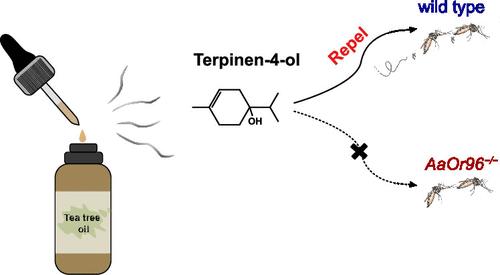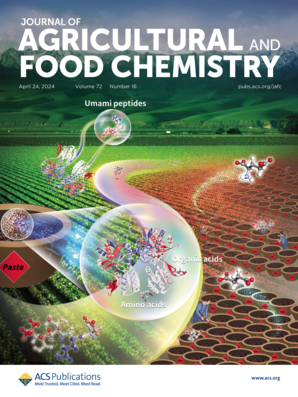Functional Characterization of an Antenna-Biased Odorant Receptor AaOr96 Involved in Tea Tree Oil Repellency Against Aedes aegypti
IF 5.7
1区 农林科学
Q1 AGRICULTURE, MULTIDISCIPLINARY
引用次数: 0
Abstract
Numerous essential oils have been well acknowledged as eco-friendly alternatives to combat insect pests due to synthetic insecticide-induced pest resistance and environment pollution. As a highly commercial essential oil, tea tree oil exhibits excellent insecticidal and repellent activities. However, the molecular mechanism of the olfactory system mediating the tea tree oil-induced repellency against insect pests remains unknown. In our study, mosquito was used as a suitable model to examine the molecular mechanism of tea tree oil-induced repellency against insect pests. The results showed that tea tree oil exhibited excellent spatial and oviposition repellency against Aedes aegypti adults and outstanding repellency against larvae, which were conferred by the main constituent terpinen-4-ol. The reduced repellency in the Orco–/– mutant strain revealed that tea tree oil-induced repellency against mosquitoes was dependent on odorant receptor(s). Moreover, we identified one antenna-biased odorant receptor, AaOr96, that was involved in detecting constituents of tea tree oil to elicit repellency, and the predicted protein–ligand complex indicated that AaOr96 interacted with terpinen-4-ol via van der Waals forces from five key residues. Finally, knocking out AaOr96 resulted in a reduced spatial repellency against A. aegypti by tea tree oil and terpinen-4-ol, and a reduced oviposition repellency by terpinen-4-ol, but not by tea tree oil. Our study not only reveals that tea tree oil has great potential in pest management but also provides more insights into the molecular basis of repellency of essential oils.

求助全文
约1分钟内获得全文
求助全文
来源期刊
CiteScore
9.90
自引率
8.20%
发文量
1375
审稿时长
2.3 months
期刊介绍:
The Journal of Agricultural and Food Chemistry publishes high-quality, cutting edge original research representing complete studies and research advances dealing with the chemistry and biochemistry of agriculture and food. The Journal also encourages papers with chemistry and/or biochemistry as a major component combined with biological/sensory/nutritional/toxicological evaluation related to agriculture and/or food.

 求助内容:
求助内容: 应助结果提醒方式:
应助结果提醒方式:


